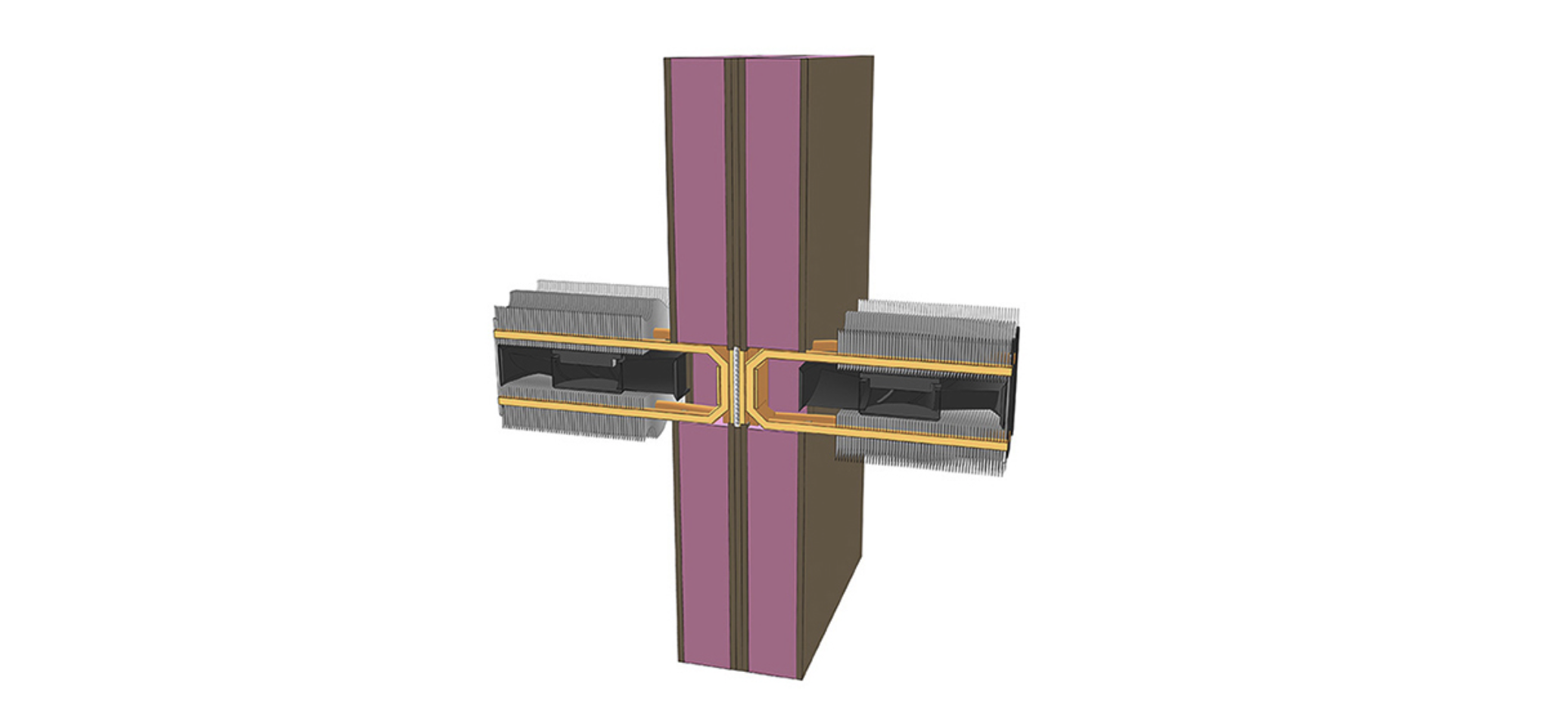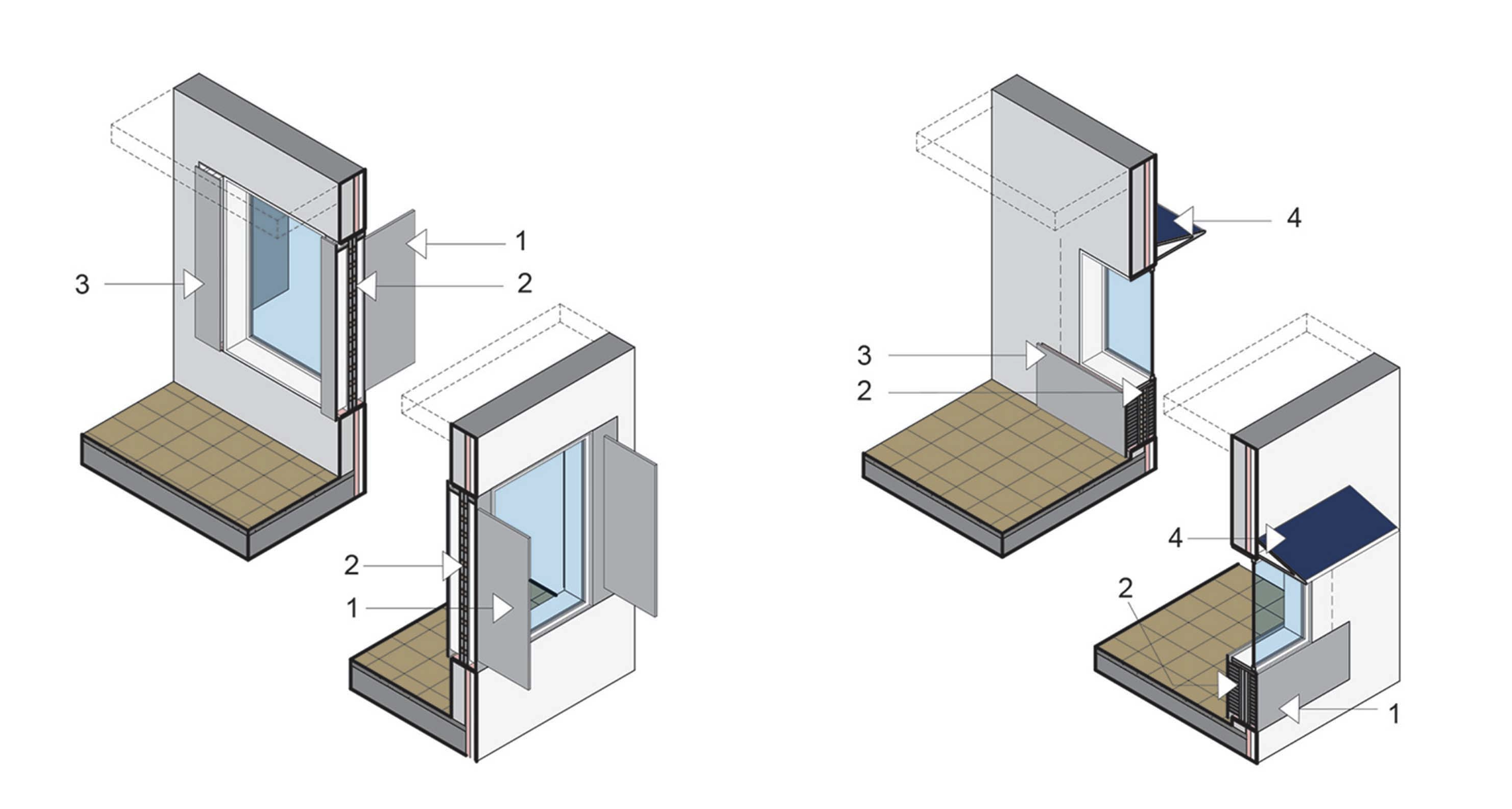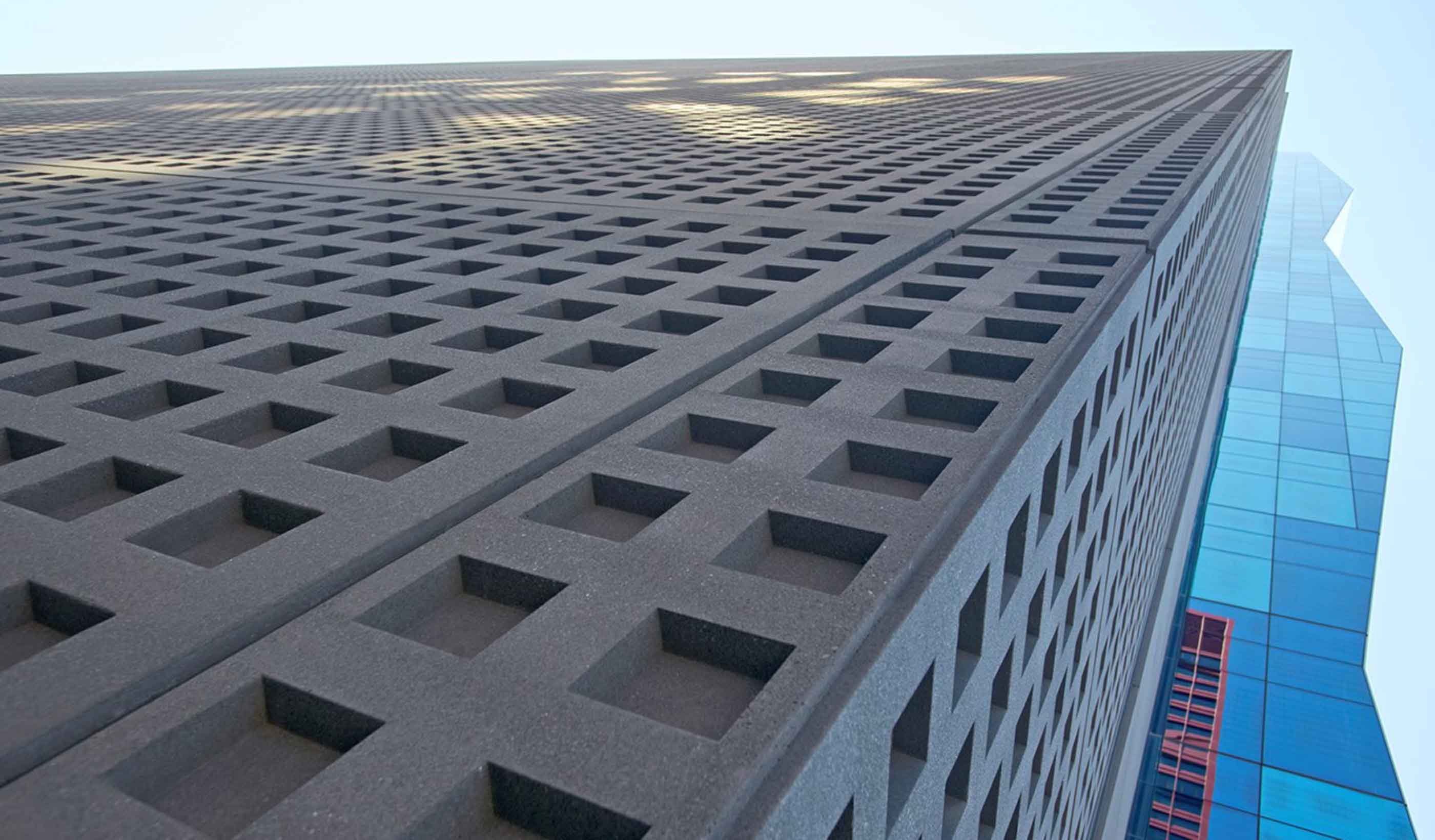What if we could design buildings that could heat and cool themselves? What if we do this by repurposing existing technology? And what if we could seamlessly integrate this technology into a building’s walls?
The building industry has made great progress in reducing its operational carbon. But humans still consume a huge amount of global energy cooling and heating our buildings. We need new ways to get to net zero.
As a doctorate student at University of Massachusetts Amherst, I was part of an ongoing research effort looking into the potential uses for thermoelectric (TE) materials in buildings. Several departments contributed to the project. Ajla Aksamija and Zlatan Aksamija, professors at UMass Amherst at the project’s onset, invented this patent-pending technology.
What are thermoelectric materials?
Thermoelectric materials are “smart” materials. TEs can convert temperature differences (or heat flux) into electrical energy. The behavior of TE materials has been known for years, but researchers have mostly focused on new classes of TE modules (TEMs). Or they have experimented with applications such as thermoelectric generators to make cars more efficient. There has been little research on their use in the building industry.
Could we implement TE devices in building facades to use the temperature difference between inside and outside to generate electrical energy? We attempted to answer that question in our research. If we could, we hypothesized that we could use that electricity to heat and cool perimeter spaces in buildings without relying on a conventional HVAC (heating, ventilation, air conditioning) system. And we could even generate electricity when the spaces are not occupied.
What makes the idea of using TEs in building exteriors so exciting?
By applying TE technology in buildings, we could potentially cut their carbon appetites and energy bills.
But that’s not all. Thermoelectric facades are modular. They don’t need to be connected to a conventional HVAC system, fuel source, or air ducts. They use radiant heating and cooling. TEMs are compact, reliable, and stable. They do not contain any moving parts, which reduces maintenance costs compared with conventional HVACs. These systems can store energy locally, operate quietly, and eliminate the need for refrigerants.
Potentially, we could retrofit existing buildings by integrating TEMs in their facades. And, once available, the industry could use these systems in new construction, potentially meeting most of the heating and cooling needs of the perimeter spaces in commercial buildings. In both cases, we would reduce buildings’ energy appetite from the grid. But first we needed to find out if the technology worked.

Researching thermoelectric modules in building facades
The team researched TEMs integrated into facades to see if theory could be reality. In the initial phase, we built simple prototypes to test our hypothesis of TE’s heating and cooling ability. Preliminary results were promising, indicating potential.
In the next phase, we studied the integration of TEMs as stand-alone elements in the facade and combined with heat sinks in facade assemblies. We used a thermal chamber to simulate various exterior environmental conditions from 0° to 90°F. And we measured the temperature of the internal heat sinks both in heating and cooling modes. Our results showed that facades with integrated TEMs and heat sinks should operate well in heating and cooling modes under varying exterior environmental conditions.
For the next phase, the team created energy models based on our initial findings. We tested a single office space with a TEM facade and a large commercial building with a perimeter TEM facade. We compared performance with a conventional system in various climate zones and weather systems. Once again, the results exceeded our expectations. Our models showed the facade panels worked best when the temperature difference was high, as this is when they delivered more energy.
We began to look at optimizing the system. Computational fluid dynamics helped us determine that about 15 percent of the facade should be devoted to TEMs for optimal performance. Next the team designed various facade assemblies with appropriate architectural details. To gain acceptance in the industry these smart facades will need to be available with a variety of materials and styles, with window options. The team also incorporated shading and photovoltaic panels in the facade systems. There’s no reason that a facade that heats and cools can’t look good, too.

What’s next for smart facades?
Researchers built two full-scale working prototypes. But they have yet to test them under real-world conditions. We published various articles and research papers on our project, examples include: “Novel Active Facade Systems and Their Energy Performance in Commercial Buildings” and “Thermoelectric Materials in Exterior Walls: Experimental Study on Using Smart Facades for Heating and Cooling in High-Performance Buildings.”
The team’s research indicates that this technology has great potential. So, what's next for facades with integrated TEMs? The inventors are pursuing a patent and seeking manufacturing partners to bring these products to the marketplace. They are excited about the possibility of smart facades in the next generation of low-carbon buildings. And I’m excited to see where it goes.
About the Author
A sustainable building analyst, Mahsa Farid Mohajer, assesses and promotes environmentally responsible and energy-efficient building practices—melding her concern for the environment with a desire for a positive impact on the way buildings are constructed and used.
More from Author
Stantec | Jul 18, 2024
Why decarbonizing hospitals smartly is better than electrification for healthcare design
Driven by new laws, regulations, tariffs, ESG goals, and thought leaders in the industry itself, healthcare institutions are embracing decarbonization to meet 2050 goals for emissions reductions.
Stantec | Jun 8, 2024
8 ways to cool a factory
Whichever way you look at it—from a workplace wellness point of view or from a competing for talent angle—there are good reasons to explore options for climate control in the factory workplace.
Stantec | Apr 18, 2024
The next destination: Passive design airports
Today, we can design airports that are climate resilient, durable, long-lasting, and healthy for occupants—we can design airports using Passive House standards.
Stantec | Mar 18, 2024
A modular construction solution to the mental healthcare crisis
Maria Ionescu, Senior Medical Planner, Stantec, shares a tested solution for the overburdened emergency department: Modular hub-and-spoke design.
Stantec | Nov 20, 2023
8 strategies for multifamily passive house design projects
Stantec's Brett Lambert, Principal of Architecture and Passive House Certified Consultant, uses the Northland Newton Development project to guide designers with eight tips for designing multifamily passive house projects.
Stantec | Apr 10, 2023
Implementing human-centric design in operations and maintenance facilities
Stantec's Ryan Odell suggests using the human experience to advance OMSF design that puts a focus on wellness and efficiency.
Stantec | Jul 6, 2022
5 approaches to a net zero strategy that communities can start right now
Whether your community has started on a plan or is still considering net zero, now is the time for all of us to start seriously addressing climate change.
Stantec | Feb 14, 2022
5 steps to remake suburbs into green communities where people want to live, work, and play
Stantec's John Bachmann offers proven tactic for retrofitting communities for success in the post-COVID era.
Stantec | Feb 8, 2022
How gaming technology is changing the way we design for acoustics
Adding 3D sound from gaming engines to VR allows designers to represent accurate acoustic conditions to clients during design.
Stantec | Dec 15, 2021
EV is the bridge to transit’s AV revolution—and now is the time to start building it
Thinking holistically about a technology-enabled customer experience will make transit a mode of choice for more people.
















